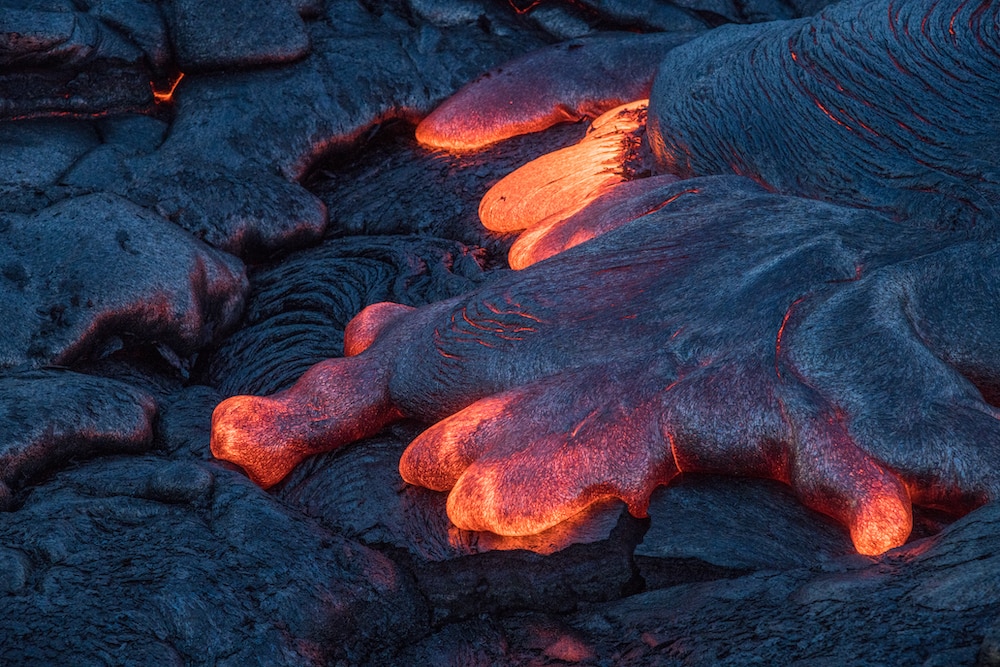Create a free profile to get unlimited access to exclusive videos, sweepstakes, and more!
Massive sunburns vaporized Mercury’s magma ocean
What is now the atmosphere of Mercury was created by the vaporized ghosts of what was once a vast magma ocean.

Mercury looks kind of dead. It’s a Sun-blasted rock that hasn’t done much except get baked by radiation for billions of years, but it wasn’t always that way.
When Mercury was born out of the violence of the early solar system, it had a seething magma ocean. Whenever it crashed with something else flying through the void (which was inevitable back then), the impact would generate enough heat for the planet to be a molten glob. The magma eventually vaporized — molten rock actually vaporized — because temperatures on Mercury were so high that it could no longer hold onto its solid state. Awesome.
What is now the atmosphere of Mercury was created by the ghosts of that magma ocean. It slightly lost mass from all those particles flying everywhere, but that escape processes are not enough to explain the planet's size. As researcher Noah Jäggi of the University of Bern found, even vaporization of the magma ocean that the scorched planet was not enough. Jäggi recently led a study published in The Planetary Science Journal.
“Rock-forming elements, such as magnesium or iron, that exist bound together with oxygen as solids or liquids at room temperature, but can exist partially as gases only at the very high temperatures thought to have existed just above the magma ocean surface,” he told SYFY WIRE.
To find out how Mercury lost most of its mass in those early days, Jäggi and his team ran simulations to see which ways Mercury could have lost the highest amounts of mass. The results were somewhat surprising. There were four possible ways that the planet could have lost both volatile (easily evaporating) and nonvolatile substances, both of which drifted to the atmosphere from the vast magma ocean that was slowly morphing into vapor. What is left of Mercury today is a huge iron core covered in the solidified remains of raging, bubbling ooze.
It is possible that charged particles from the solar wind turned metal to vapor. X-rays and ultraviolet photons from the Sun’s upper atmosphere could have also done significant damage. Photoionization, in which radiation turns elements into ions that gain or lose an electron and are then grabbed by the solar magnetic field, could have also done it. The last possible culprit was Jeans escape, where low-mass, high-velocity molecules high up in Mercury’s exobase, or upper atmosphere, could have zoomed through before head-butting other molecules.
“In the exobase, temperatures are not high enough to make Jeans escape an efficient loss process compared to the others,” Jäggi said. “The magma ocean lifetime dictates the time frame over which material was lost. The greater the greenhouse effect the longer the magma ocean lifetime, so the longer the time the material could have been lost to space.”
So Jeans escape is out. Loss rates for volatile and nonvolatile substances were similar, but most likely the result of the other more intense processes. Because the upper atmosphere is less dense and not so thick with greenhouse gases, heat that comes from the surface can reach far higher and equalize atmospheric temperatures. Escape slowed down as the magma ocean solidified. However, this deepens the mystery of why there is so much sodium on the surface of this scorched planet. It managed to stay unaffected by the processes that vaporized magma. So the exact cause of mass loss remains unknown, at least for now.
“There must be more to the high sodium measurements on Mercury’s surface, as it cannot have accumulated nor have been lost in any significant amount given our modeled loss rates and magma ocean lifetimes,” said Jäggi.
So even though the reasons it probably shrank have finally come out of the dark, Mercury is still a mystery.


























